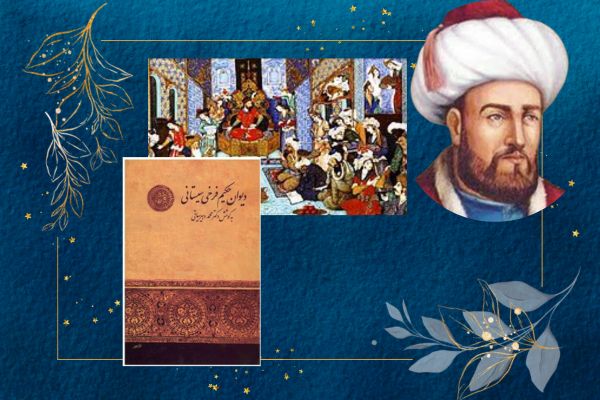Farrukhi Sistani (c. 980 – c. 1037 CE) was a distinguished Persian poet of the Ghaznavid era, celebrated for his eloquent qasidas (odes) and mastery of courtly praise poetry. Born in Sistan (present-day southeastern Iran), he became one of the most prominent literary figures of his time, serving as a court poet for the Ghaznavid rulers.
Life and Career
Farrukhi was born into a cultured family in Sistan and displayed an early talent for poetry and music. His skills as a musician and lyricist initially gained him local recognition. Seeking greater opportunities, Farrukhi left Sistan and traveled to the Ghaznavid court in Ghazni, where he found favor with Sultan Mahmud of Ghazni and later his son, Sultan Mas'ud I.
As a court poet, Farrukhi composed qasidas that praised the rulers, celebrated their military victories, and extolled the splendor of courtly life. His association with the Ghaznavid court allowed him to interact with other eminent poets of the time, such as Unsuri and Asjadi.
Poetic Style and Themes
Farrukhi's poetry is renowned for its elegance, vivid imagery, and musicality. He excelled in the qasida form, which he used to praise his patrons, describe nature, and convey moral and philosophical reflections. Key features of his poetry include:
- Praise and Panegyric: Farrukhi’s qasidas often glorify the Ghaznavid rulers, highlighting their power, generosity, and victories.
- Nature Imagery: His poems are rich with descriptions of seasons, landscapes, and natural beauty.
- Artful Language: Farrukhi’s use of metaphor, simile, and harmonious rhythms showcases his linguistic sophistication.
His poetry reflects the grandeur of the Ghaznavid court and provides insights into the cultural and political milieu of his time.
Works
Farrukhi’s Diwan (collected poems) is the primary source of his literary legacy. It includes qasidas, ghazals (lyrical poems), and other poetic forms. Among his most famous works are his qasidas celebrating spring and Nowruz (the Persian New Year), which exemplify his mastery of nature imagery and festive themes.
Death and Legacy
Farrukhi is believed to have died around 1037 CE. His contributions to Persian literature cemented his status as one of the leading poets of the early Islamic period. He influenced subsequent generations of Persian poets, who admired his technical mastery and artistic creativity.
As a member of the prestigious Ghaznavid literary circle, Farrukhi Sistani played a crucial role in the development of Persian court poetry. His works remain a vital part of the Persian literary canon, celebrated for their artistic brilliance and historical significance.
Sokhanvar information
Published on Dec. 27, 2024, 4:43 p.m. by @admin
- Name: Abu'l-Hasan Ali ibn Julugh Farrukhi Sistani
- Persian Name:: ابوالحسن علی بن جولوغ فرخی سیستانی
- Alias: Farrukhi Sistani
- Comments: 0
- Views: 928
Works
Farrukhi's surviving works consist mainly of his divan (collection of poems), which number about 9,000 couplets. A document in the Bankipore Library refers to Farrukhi as the author of an epic poem, the Shahriyarnameh: this is yet to be confirmed.
Books
- No books added yet.

